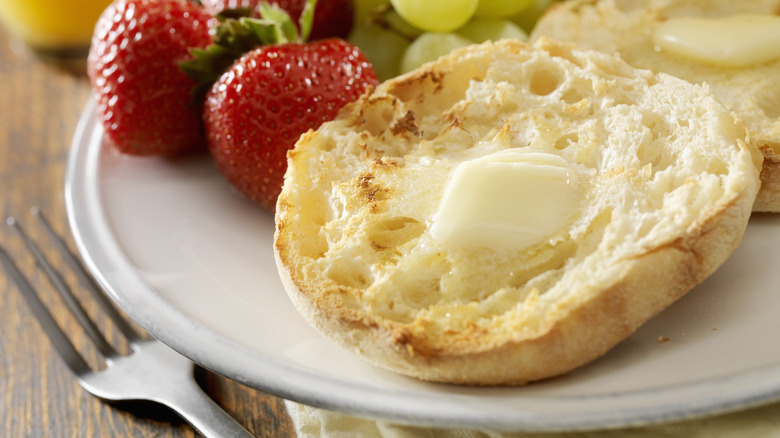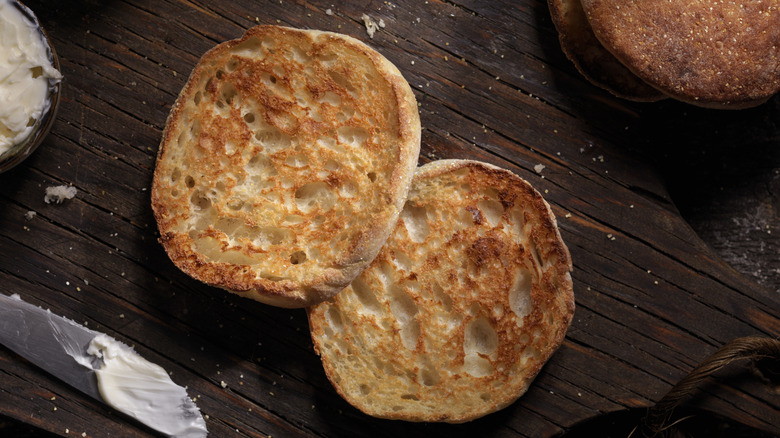Baking Soda Is The Unexpected Ingredient Traditional English Muffins Leave Out
Baking soda is an ingredient in many recipes for cakes, cookies, quick breads, and muffins. It's used as a leavening agent to create a chemical reaction in the dough or batter, which allows your baked goods to rise and gives them volume and texture. So why, then, in the recipe for traditional English muffins, is baking soda left off the ingredient list? It has to do with the effects of different leavening agents used in baking and how they affect the texture and flavor.
Leaveners come in a few different forms, the two most common being chemical (baking soda or baking powder) and biological (yeast). Baking soda works well in cake and quick bread recipes where you want a light and airy texture, but the chewier English muffin — which is really not a muffin at all but rather a form of bread — is leavened with yeast, adding flavor and producing the characteristic "nooks and crannies" inside. If you were to include baking soda in your recipe for English muffins, their signature texture would be lost.
Both types of leavening agents produce carbon dioxide and baking soda does this as soon as it comes into contact with acidic liquid ingredients like buttermilk or lemon juice. For that reason, baked goods made with baking soda should be put into the oven immediately. Yeast as a leavening agent requires more patience, as you must wait for it to ferment.
English muffins are for more than breakfast
English muffins are defined by their soft, slightly chewy texture inside and crunchy exterior dusted with cornmeal. We often associate them with breakfast, and in fact, they were once marketed as a more sophisticated alternative to toast by their creator, Samuel Bath Thomas. But English muffins are for more than breakfast, standing in for pizza crust and hamburger rolls, as well as any other sandwiches you can think of.
While there is some science that goes into their creation, that's not to say it's all that difficult to make homemade English muffins — and they might taste even better than their grocery store counterparts. In fact, while bread-making at home may seem like an intimidating project to the uninitiated — with all kinds of special equipment required — English muffins are cooked on the stovetop, requiring nothing more than a simple skillet or griddle.

